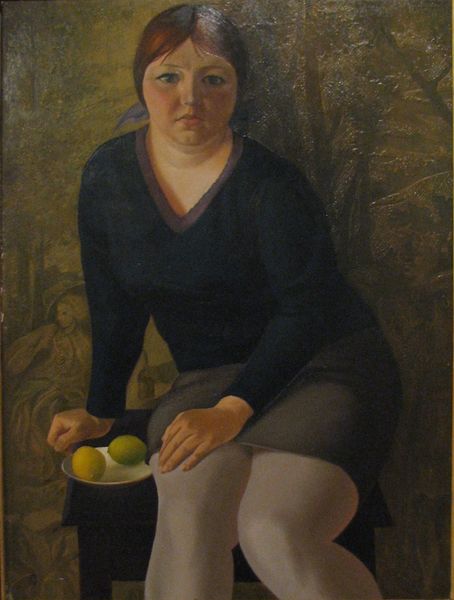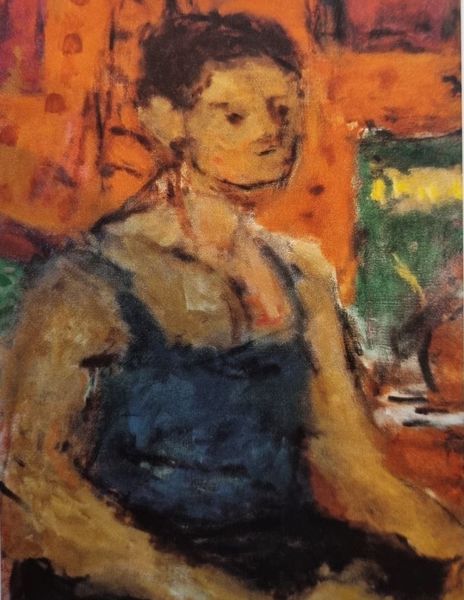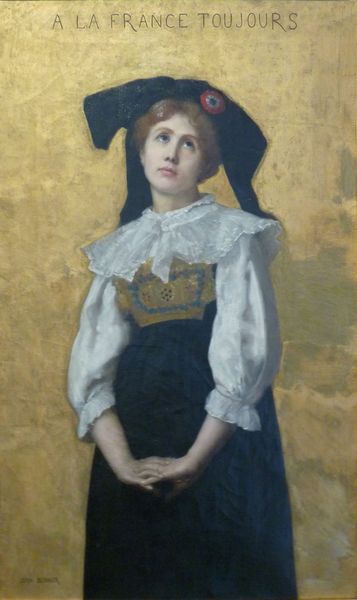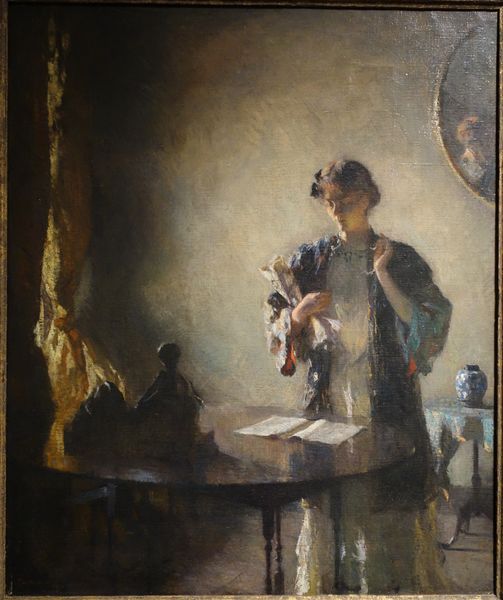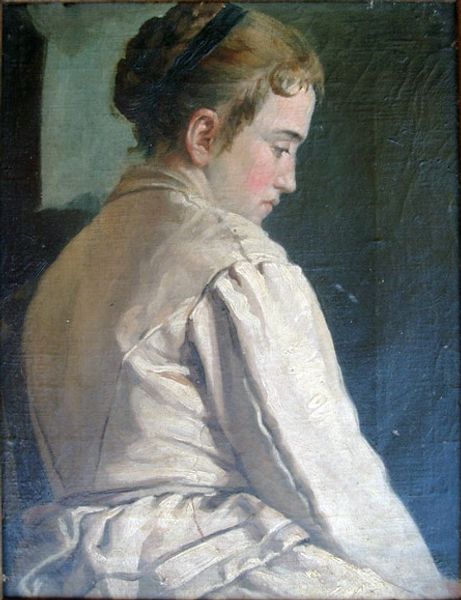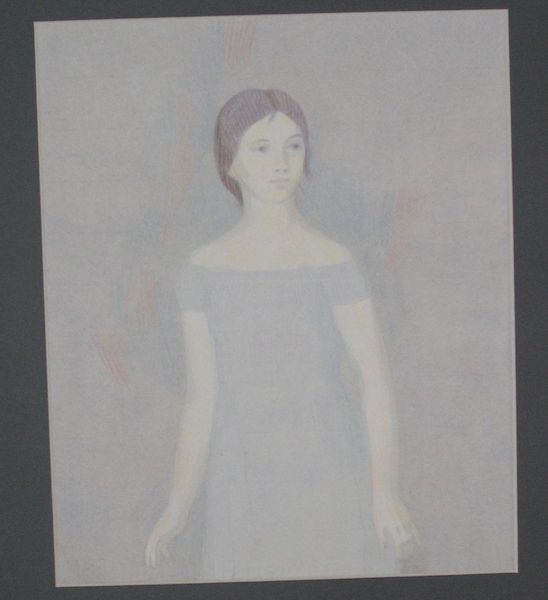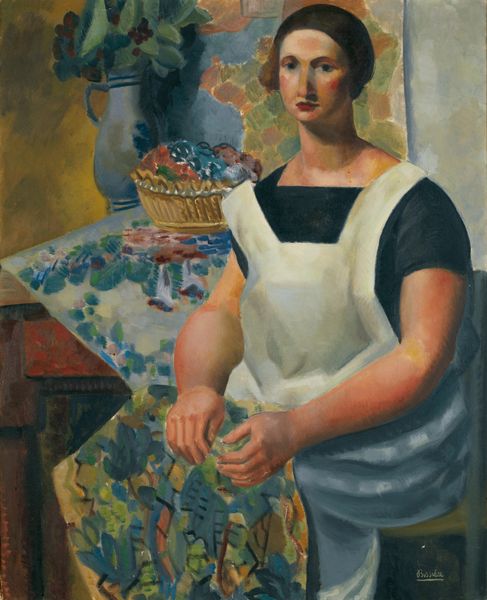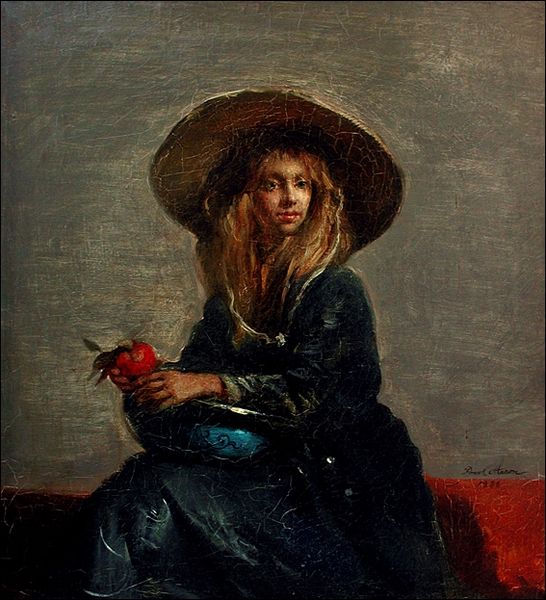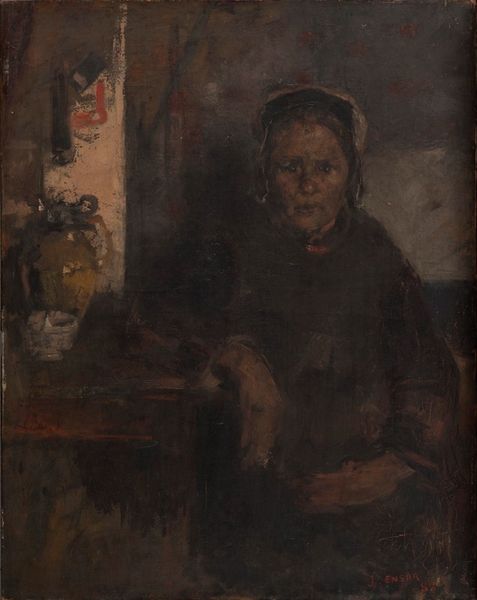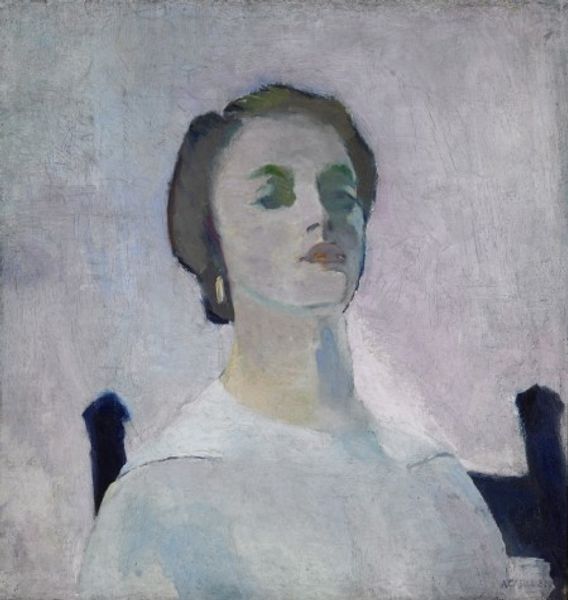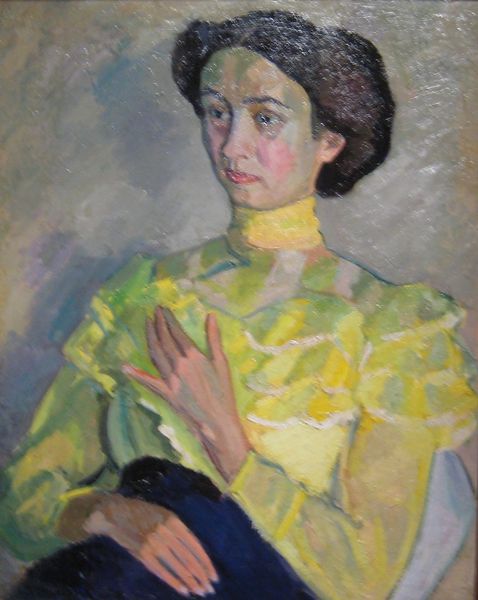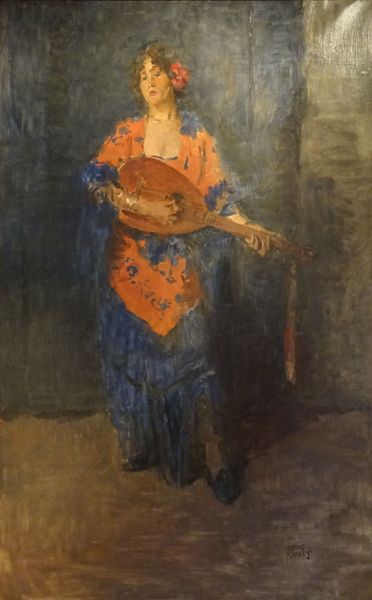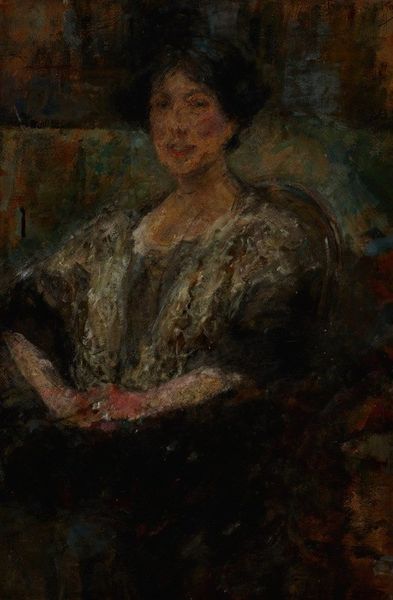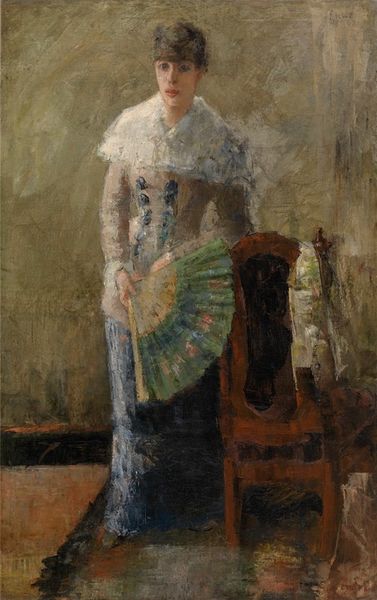
Portrait of Marie Jeanne Liotard with a basket of peaches 1779
0:00
0:00
jeanetienneliotard
Musée d'Art et d'Histoire, Geneva, Switzerland
Copyright: Public domain
Jean-Étienne Liotard painted this portrait of Marie Jeanne Liotard, likely using pastels, during the 18th century. The portrait provides a glimpse into the cultural values of the time. In 18th-century Europe, portraiture served as a crucial tool for the aristocracy and bourgeoisie to assert their status, wealth and taste. Liotard, who worked across Europe, was known for his realism and attention to detail. Here we see Marie Jeanne in a moment of quiet repose. This is a very different representation of women than that seen in earlier art history, one that isn’t sexualized or allegorical. Yet is that accurate? Or is the basket of fruit a symbol that alludes to fertility and sexuality? Art historians consult letters, diaries, and period documents to shed light on the subjects and circumstances of portraits like this. By examining the social context in which art is made, we can better understand how images are used to uphold or challenge existing social norms.
Comments
No comments
Be the first to comment and join the conversation on the ultimate creative platform.
